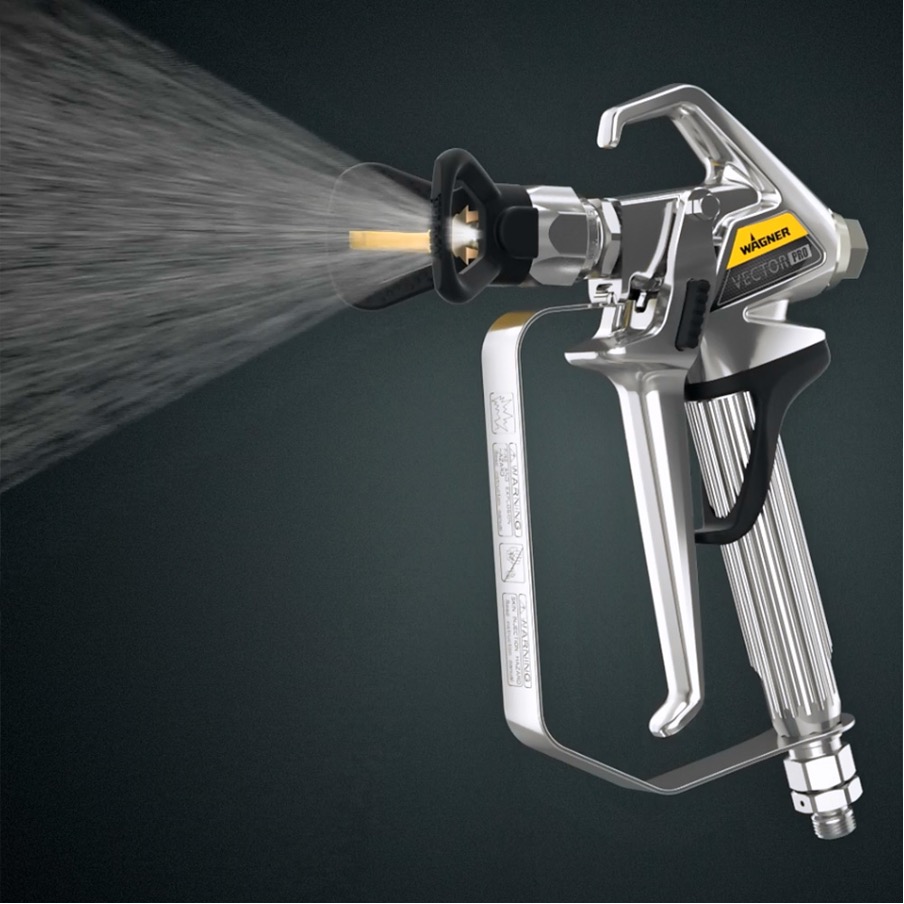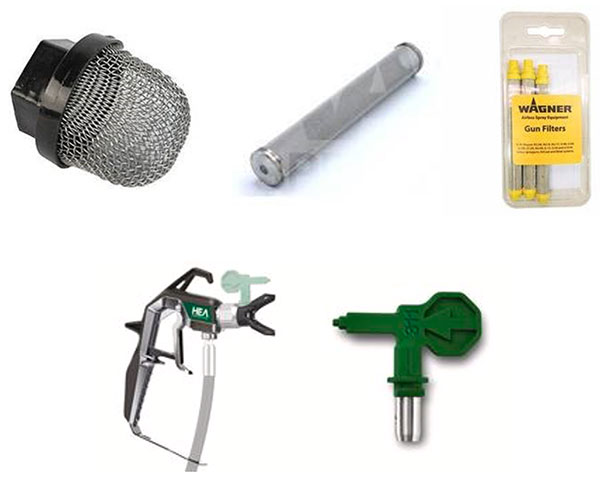One of the most common techniques used in painting is called “Airless” Spray Painting.
It’s well suited to larger projects and high usage where you need to quickly create an extremely good surface finish.
How does an airless paint sprayer work?
A suction filter is connected to the flexible suction tube and this is inserted into “screened or sieved” paint. The paint is drawn up into a chamber and a piston increases the pressure as required. From here the paint is pumped via a manifold filter to the spray gun filter and “tip”.

Paint roller
+ Quick cleaning
− Paint application time is longer
− Transporting of materials
− Scaffolding climbed multiple times
− Repeatedly moving material over large areas
− Masking is required
− Low / uneven covering capacity on dark surfaces
− Multiple roller applications required to cover a dark surface
Airless Paint sprayers
− Cleaning takes longer
+ Faster application
+ Materials remain on the ground
+ One-off climb with gun and hose
+ No material moving (hose length)
+ No added work for masking
+ Good even cover on dark surfaces
+ Even cover on textured surfaces
Airless Paint Sprayer Selection criteria
- Application – Commercial or Industrial
- Coating – Acrylic or Enamels or Intumescent
- Performance – Capacity / Maximum Tip Size / Weight / Portability
- Technology – Type / Quality
- Price – Budget
- Serviceability – Maintenance
- Warranty
Paint types
Nearly all paint types are sprayable including emulsions, stains, wall paints, primers and undercoats or any other water- and/or synthetic-based liquids. Structured paints or those with granular solids are not usually sprayable with an airless machine.
Airless provides a great finish on large surface areas but usually increases the overspray. This results in product wastage and a less consistent / attractive spray pattern. As opposed to other techniques, you will also need to spend more time taping off more parts along with machine cleaning.
Spray Gun “Tips”
Tips are able in many sizes and will produce very little overspray even though the paint is forced under high pressure through a very small hole. Most tips are reversible to assist in clearing any blockages and are easily changed on the paint gun so you can change to thick / thin paint.
Tips are suited to large surface areas and are a great solution for interior wall paint (latex). Many tips can also handle big lacquer / staining projects.
For outdoor projects (exterior latex), professional paint, or flame retardants, you will need a bigger spray tip. Always check that your machine has sufficient capacity for the job.
Common projects include walls – Interior and exterior, wooden garden sheds, ships (especially two-component paints) and a series of furniture, doors, floors, impregnation projects.
Worn tips
- Use 25% more paint
- Add 20% in additional labour
- Produce uneven coverage and inconsistent mil build
- Reduce production — requiring more passes
- Results in a poor quality
HEA spray painting
HEA technology and tips suit demanding consumers, professional painters and landlords of apartments and is a technology developed by Wagner that has all the features of Airless plus some HVLP features.
HVLP offers a slightly less attractive spray pattern, but it is friendlier and easier to use, produces less overspray and is also suitable for a wide range of jobs. It is especially suitable for smaller areas and less intensive use. An Airless sprayer produces relatively a lot of overspray, is harder to use, less forgiving, and makes quite a lot of noise
HEA advantages
HEA, stands for “high efficiency airless” – The difference lies in the capacity.
An HEA paint sprayer has less capacity than an Airless sprayer but delivers the same litres per minute yield (speed of work) and can handle the same maximum viscosity (maximum thickness of the paint).
What do I get with HEA?
- Up to 50% less overspray
- Fast working and higher litre yield
- Less preparation and cleaning time
- User-friendly (less difficult to use)
- Suitable for a wide range of uses
- Handles thicker paint and is far more forgiving
- HEA spray pattern is more attractive than Airless
- Relatively less noise

